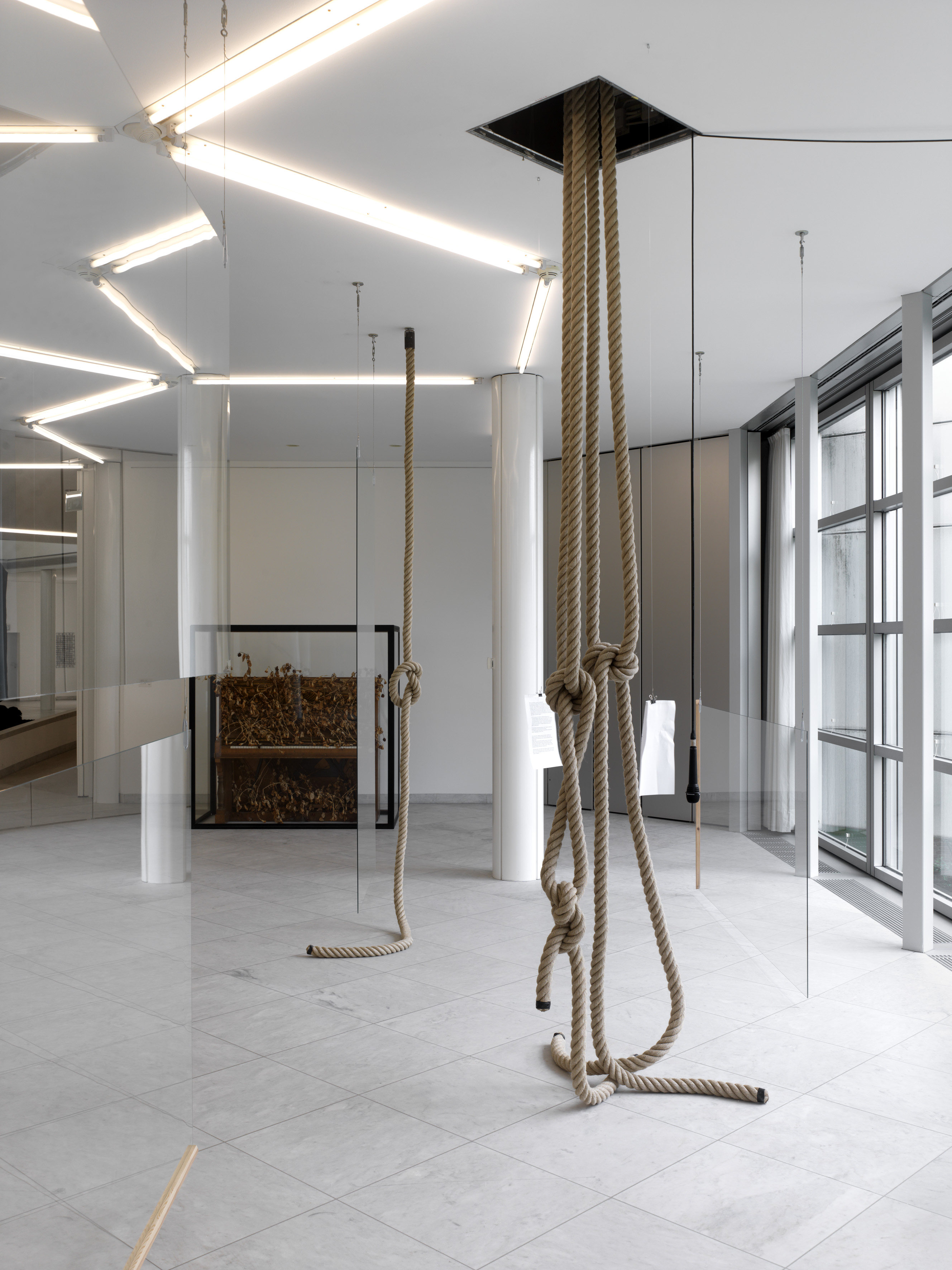Textiles: Open Letter
Based on the structure of weaving and the warp thread as an organic line (as described by Paul Klee) TEXTILES: OPEN LETTER creates a dialogue between art and textiles through abstraction, bringing together historical works and those of a younger generation. The title which refers to a 1958 weaving by artist Anni Albers, points to the etymological link between textiles and text through the Latin word texere to weave, and it opens a discussion about a language communicated using the medium of fibres and threads.
Through large-scale sculptures, wall hangings and fabric samples as well as works on paper, film and photography, the exhibition uncovers the potential of textile materials and structures and looks at how artists have reworked this medium through iterations that are imaginative, conceptual and poetic as well as attentive to social concerns. Especially since the Bauhaus, textile practice has been in dialogue with aesthetic and material experiments coming from the ‘fine art.’ During the 1970s, a number of women artists – including Lenore Tawney, Magdalena Abakanowicz and Sheila Hicks – pioneered the Fibre Art movement with the aim of establishing an independent status for textiles as part of a feminist practice: often in close contact with Minimalist artists such as Agnes Martin, and in some cases on the basis of a training in the Bauhaus tradition. They designed monumental structures that moved beyond the technical limitations of the loom. A generation of artists emerging in the 1970s and 80s including Beryl Korot, Nasreen Mohamedi, and Lygia Pape, explored textiles though a fascination with serial notation and metaphors of the social, and today artists are often drawn to this medium because of its status as a ‘difficult’ material and its unstable position between functionality and aesthetics, art and craft, the individual and the collective.
The exhibition shows the many and varied ways in which the history of Minimal and Conceptual art movements that shaped the Museum Abteiberg collection, have been influenced by textile materials and processes and by implication the extent to which textiles have been excluded from a discussion of the canon; often because of their utilitarian, gendered and déclassé connotations. In this sense, the title Open Letter can be understood as an invitation to rethink the influence of textiles on art and vice versa, as well as the key role played by textiles in the development of an abstract visual language that can communicate across disciplinary boundaries.
Museum Abteiberg and Generali Foundation (catalogue)
23 June – 10 November 2013
Leipzig presentation:
2 February 2012 – 3 February 2013
Curated by Grant Watson and Rike Frank
Artists in the exhibition:
Magdalena Abakanowicz, Anni Albers, Carl Andre, Leonor Antunes, Tonico Lemos Auad, Thomas Bayrle, Jagoda Buic, Heinrich Clasing, Yael Davids, Sofie Dawo, Ria van Eyk, Hans Finsler, Elsi Giauque, Sheela Gowda, Eva Hesse, Sheila Hicks, Loes van der Horst, Johannes Itten, Elisabeth Kadow, Paul Klee, Benita Koch-Otte, Heinrich Koch, Beryl Korot, Konrad Lueg, Agnes Martin, Katrin Mayer, Cildo Meireles, Kitty van der Mijll Dekker, Nasreen Mohamedi, Walter Peterhans, Edith Post-Eberhardt, Josephine Pryde, Florian Pumhösl, Grete Reichardt, Elaine Reichek, Willem de Rooij, Desirée Scholten, Johannes Schweiger, Gunta Stölzl, Lenore Tawney, Rosemarie Trockel, Vincent Vulsma, with archival materials and samples from Bauhaus Archiv Berlin, Stiftung Bauhaus Dessau, Burg Giebichenstein, Deutsches Textilmuseum Krefeld, and Stedelijk Museum Amsterdam, Fondation Toms Pauli, with a selection of books from the Seth Siegelaub @ Stichting Egress Foundation, and Coptic Cloth from the Museum Abteiberg collection
In cooperation with
Allianz Kulturstiftung
and funded by
Kunststiftung NRW and Mondriaan Fonds
Click to access the Leipzig presentation PDF ︎︎︎








Exhibition images, Abteiberg Museum, 2013, photography by Achim Kukulies